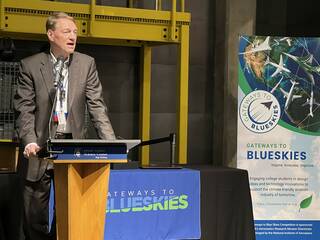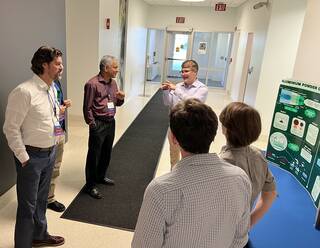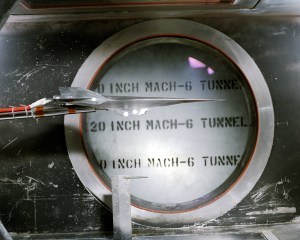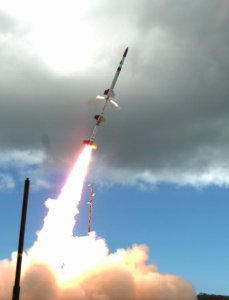In this year’s Gateways to Blue Skies competition, NASA asks collegiate teams to examine aviation-related systems that will aid in natural disaster management.
In this year’s Gateways to Blue Skies Competition: Advancing Aviation for Natural Disasters (aka, Blue Skies), NASA asks collegiate teams to examine aviation-related systems that will aid in natural disaster management. As climate change increases the frequency and intensity of many natural disasters, NASA Aeronautics and its partners seek ideas for technologies that can be onboarded to improve aerial disaster management efforts immediately and into the next approximately 10 years.
Aviation technologies have the potential to aid in disaster relief, assist in firefighting missions, and provide supplies to hard-to-reach areas during an emergency event. Many emergency response professionals believe there is no one proposed concept that will be applicable for all different natural disasters or can be applied to all phases of management, opening this competition to a wide range of possibilities. New technologies and applications gained from this crowdsourced competition may be developed further by NASA for use in coordinating and facilitating disaster management.
“Natural disaster poses real threats to society, the economy, and the lives of individuals and communities – not to mention the health of the planet. There are significant innovation opportunities within aviation to support the future needs of disaster management: to provide more timely and actionable information, reduce the risks and workload posed to emergency responders, to provide new cost-effective technologies that improve efficiency of the preparation, response, and recovery – often at a much larger scale and at a much faster pace than are required for solving ordinary problems,” said Dr. Marcus Johnson, project manager in the Aeronautics Directorate at NASA Ames Research Center and 2024 Blue Skies co-chair. “I am very much looking forward to seeing the ideas that stem from this year’s Gateways to Blue Skies contenders.”
Sponsored by NASA’s Aeronautics Research Mission Directorate’s (ARMD’s) University Innovation (UI) Project, Blue Skies encourages diverse, multi-disciplinary teams of college students to conceptualize unique systems-level ideas and analysis to an aviation-themed problem identified annually. It aims to engage as many students as possible – from all backgrounds and collegiate levels, freshman to graduate.
In this competition, participating students in teams of two to six will select a system or systems that can be applied to a specific use case in one type of natural disaster and disaster management phase. Competitors must choose technologies that can achieve high technology readiness by 2035.
Teams will submit concepts in a five-to-seven page proposal and accompanying two-minute video, which will be judged in a competitive review process by NASA and industry experts. Up to eight finalist teams will receive up to $8,000 each to continue their research to develop a final research paper and infographic, and to attend the 2024 Gateways to Blue Skies Forum to be held in June 2024 at NASA’s Ames Research Center. Forum winners will be offered the opportunity to intern with NASA Aeronautics in the academic year following the Forum.
“This theme is increasingly relevant to everyone as we continue to see the impacts of climate change,” said Steven Holz, UI Assistant Manager and Blue Skies Co-Chair. “There are many untapped or under-utilized capabilities that can be deployed through aeronautics for all types of natural disasters and across the different phases of disaster management. Innovation from today’s teams may prove vital in making advances that affect individuals and environments affected by natural disasters.”
Teams interested in participating in the challenge should review competition guidelines and eligibility requirements posted on the Gateways to Blue Skies competition website, https://blueskies.nianet.org. Teams are encouraged to submit a non-binding Notice of Intent (NOI) by October 16, 2023 via the website. Proposal and videos are due February 27, 2024.
“Blue Skies has been transformational for participants,” said Koushik Datta, UI Project Manager. “It’s incredible to see how engaging in practical solutions to real-world problems in aeronautics through this competition has affected students’ systems-level thinking, networking opportunities, and academic profile. Blue Skies is inspiring the next generation of aeronautics change-makers, while also providing tangible innovations for aviation and NASA aeronautics to consider developing further.”
The Gateways to Blue Skies Competition is sponsored by NASA’s Aeronautics Research Mission Directorate’s (ARMD’s) University Innovation project (UI) is managed by the National Institute of Aerospace (NIA).
For full competition details, including design guidelines and constraints, relevant resources, and information on how to apply, visit the Blue Skies website at:
For more information about NASA’s Aeronautics Research Mission Directorate, visit: https://www.nasa.gov/aeroresearch/programs
For more information about the National Institute of Aerospace, visit: www.nianet.org





























